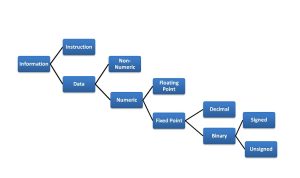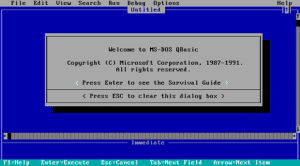“Selling is easy—but selling effectively, through the right people, at the right time, and in the right place? That’s where channel management comes in.”
Table of Contents
Toggle
In today’s dynamic marketplace, simply having a great product isn’t enough. Businesses need a well-structured approach to bring their products or services to the end consumer. That’s where channel management comes in.
Whether you’re running an eCommerce business, a retail store, or offering services, managing your channels effectively can directly impact your sales, customer satisfaction, and brand loyalty. This article dives deep into what channel management is, why it matters, and how you can master it.
What is Channel Management? Let’s Break It Down
Imagine you’ve built a great product. Now, the question is—how do you get it to your customers?
This process of choosing, organizing, and optimizing the different ways (or “channels”) your product reaches your customer is what we call Channel Management.
➡️ These channels could be:
-
Your own website or store (Direct Channel)
-
Distributors, wholesalers, or online platforms like Amazon (Indirect Channel)
-
Or a mix of both (Hybrid Channel)
The goal of channel management is to ensure that each channel is well-aligned with your business objectives and customer expectations.
Real-Life Example:
If a company sells smartphones, it may sell:
-
Directly through its online store
-
Indirectly via retailers like Amazon or Flipkart
-
Or both together—this is channel management in action.
Why Is Channel Management So Important?
Think of channel management as the bridge between your product and your customers. If that bridge is shaky, slow, or broken, your customers won’t reach you.
Here’s what good channel management can do:
-
🛍 Increase sales through multiple touchpoints
-
🌍 Reach new markets faster and more efficiently
-
⏱ Speed up delivery and order fulfillment
-
💬 Improve communication with channel partners
-
🤝 Build stronger relationships with sellers and agents
Whereas, poorly managed channels can lead to conflicts, inefficiencies, and customer churn.
The 5 Core Components of Channel Management
Let’s go over the main steps in managing your channels effectively—think of these as your “lesson plan” for success.
1️⃣ Channel Design
-
This means choosing which types of channels to use.
-
Ask yourself:
Who are my customers?
Where do they shop?
Do they prefer online or offline?
2️⃣ Channel Selection
-
Once you’ve designed the channel, select which partners to work with.
-
Criteria to consider:
✔ Reputation
✔ Sales experience
✔ Market knowledge
3️⃣ Training & Support
-
You can’t just give a reseller your product and hope for the best.
-
Provide training so they know:
-
How to sell your product
-
How to represent your brand
-
How to serve your customers well
-
4️⃣ Channel Performance Evaluation
-
Like in school, you need to check performance.
-
Are they hitting sales targets?
-
Are customers happy?
-
Are they communicating clearly?
-
Use CRM tools or dashboards to monitor this.
5️⃣ Conflict Management
-
What if two partners fight over the same territory, or a price war starts?
-
You need rules, open communication, and incentives to prevent or resolve channel conflict.
Types of Distribution Channels
Understanding the different types helps tailor your strategy better:
➤ Direct Channels
You sell directly to consumers—through your website, app, or in-store.
Pros: Full control, higher margins
Cons: Requires infrastructure and resources
➤ Indirect Channels
You use intermediaries like resellers, wholesalers, or agents.
Pros: Wider reach, cost-effective
Cons: Less control, lower margins
➤ Omnichannel Strategy
A mix of online and offline channels offering seamless integration.
Example: A customer browses a product online and buys it in-store.
Understanding the Types of Distribution Channels
Here’s a classroom-style chart to make it simple:
| Channel Type | Example | Pros | Cons |
|---|---|---|---|
| Direct | Company website, retail shop | Full control, better profit | Costly to manage on your own |
| Indirect | Resellers, dealers, marketplaces | More reach, lower upfront cost | Less control, profit sharing |
| Hybrid | Using both direct & indirect | Best of both worlds | Complex to manage |
Useful Tools for Channel Management
Let’s say you want to track your partners’ performance and automate communication—what do you use?
Here are some popular tools:
-
Salesforce – advanced CRM
-
Zoho CRM – affordable and flexible
-
ChannelAdvisor – great for eCommerce brands
-
PartnerStack – for affiliate and partner tracking
These tools help manage contacts, track sales, send updates, and pull reports—all in one place.
Best Practices to Manage Channels Like a Pro
Here are some practical tips to succeed:
📌 Communicate Regularly – Don’t leave your partners in the dark
📌 Train and Motivate – Invest in their success
📌 Set Clear Expectations – Avoid future confusion
📌 Adapt to Market Changes – Be flexible in your strategy
📌 Use Data – Let performance metrics guide your decisions
Conclusion: Your Final Takeaway
Channel management is not just a business buzzword—it’s a core strategy to help your business grow. Whether you’re a startup or a global brand, managing your sales and distribution channels effectively can make or break your success.
Think of it as a school timetable—if every subject (channel) is well-planned, everything runs smoothly. But if one subject clashes with another, the whole system falls apart.
👉 So, invest in building strong relationships, use the right tools, and always stay connected with your market and your partners.
Thank You, Scholars, For Reaching out!





